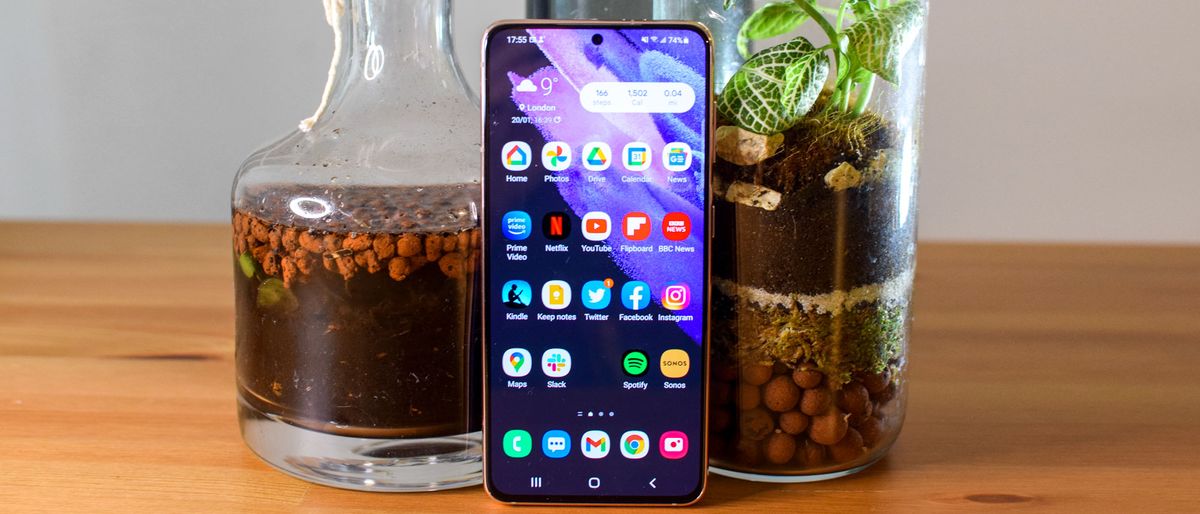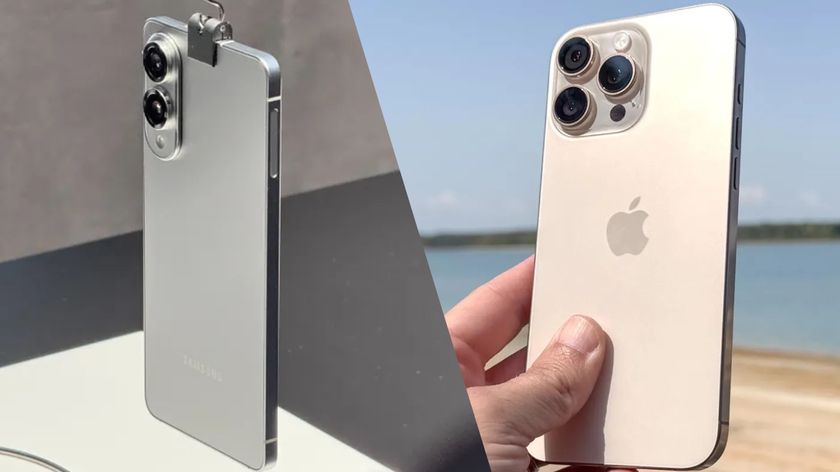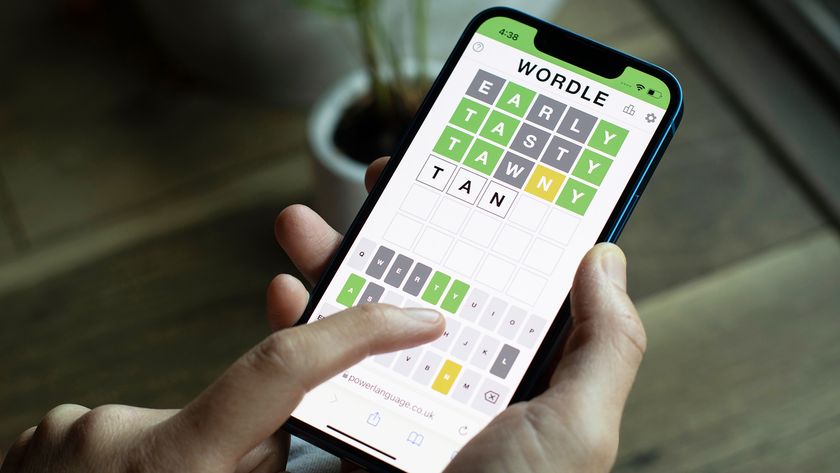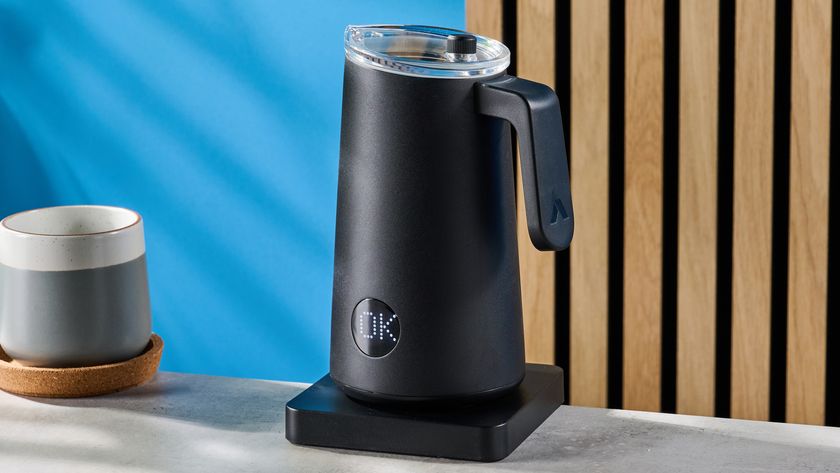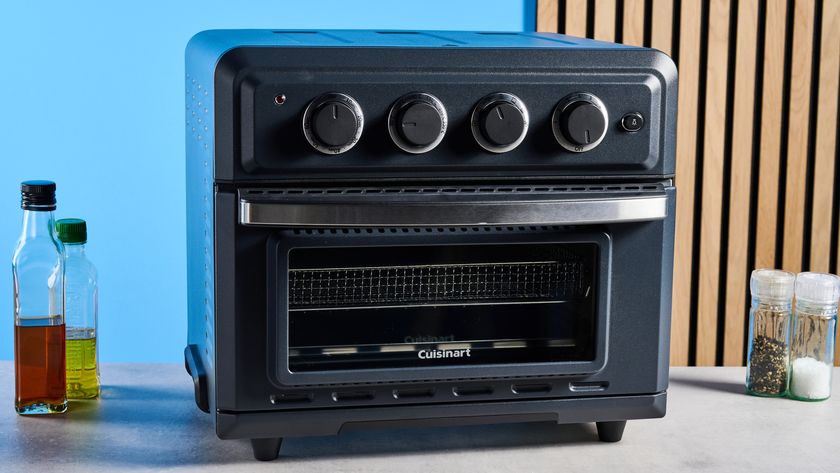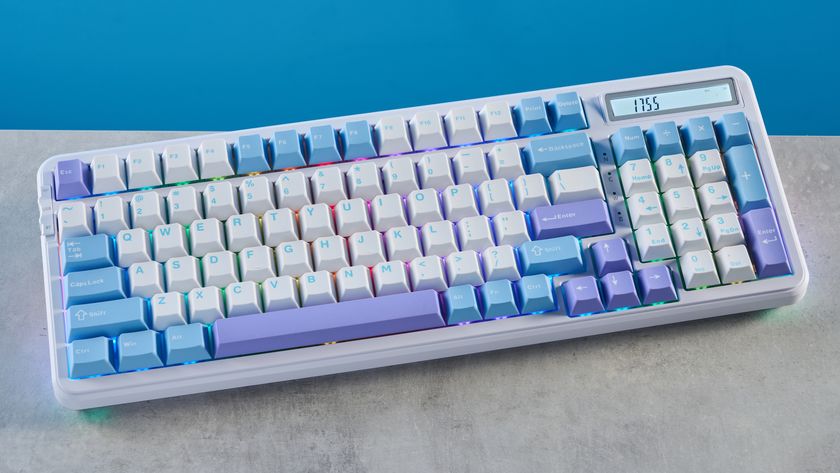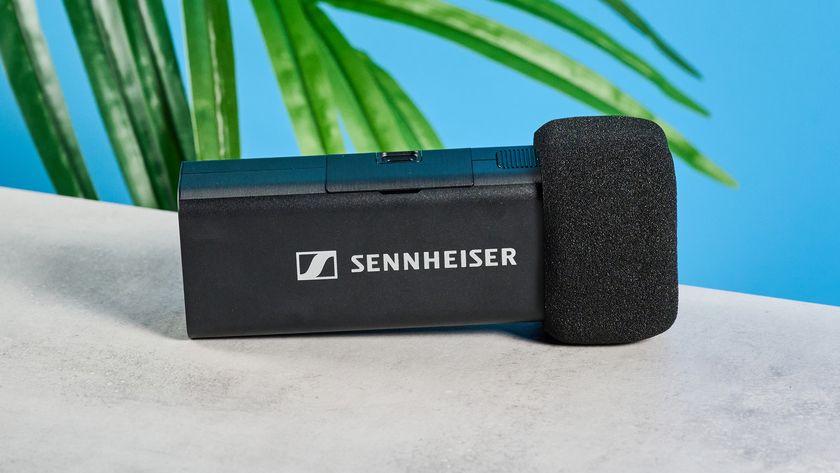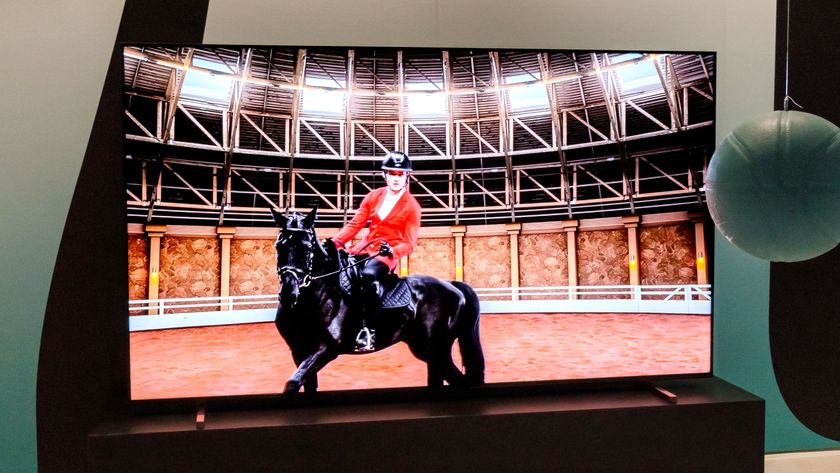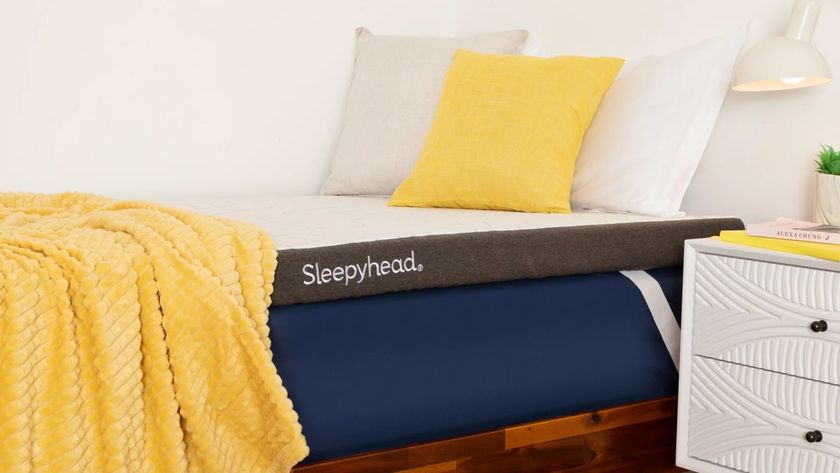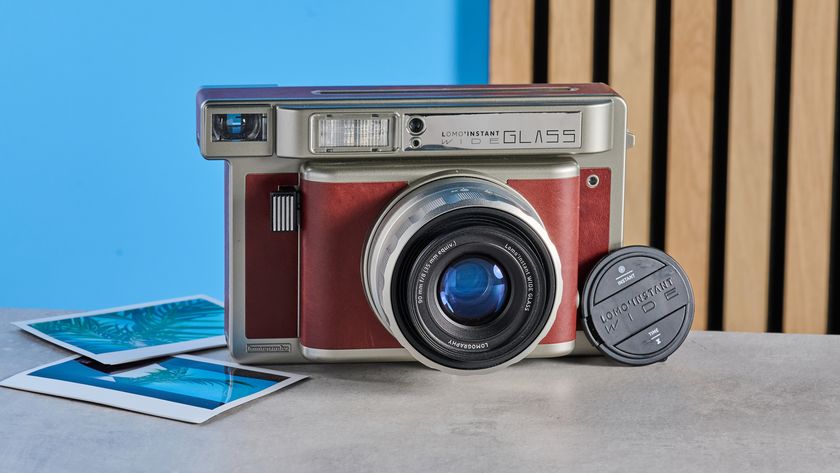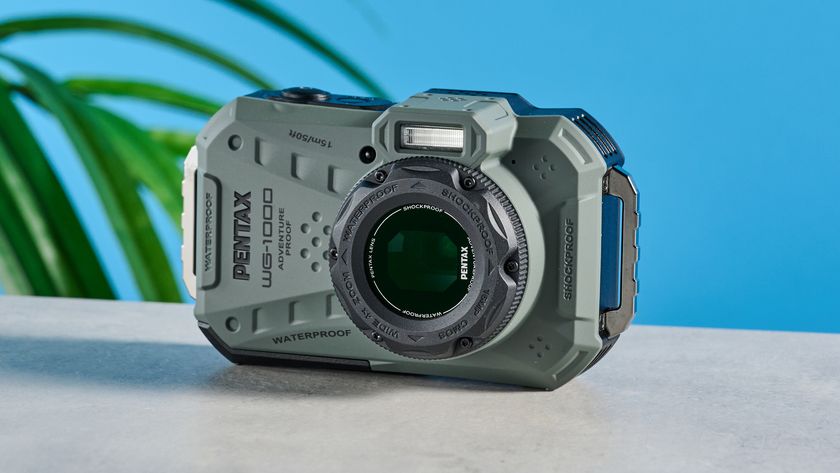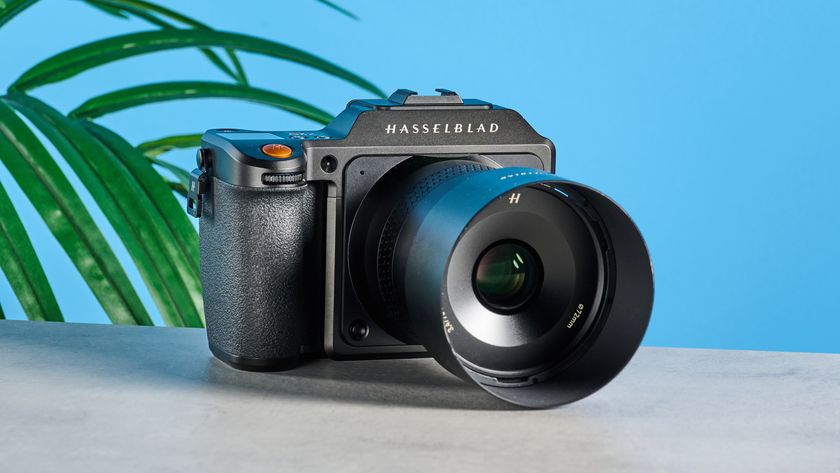Tom's Guide Verdict
Samsung’s Galaxy S21 is a more refined, smarter and crucially cheaper new flagship phone.
Pros
- +
Excellent dynamic 120Hz display
- +
Powerful performance
- +
Refined design
- +
Powerful camera zoom
Cons
- -
No charger or microSD card slot
- -
Plastic back
- -
Some camera inconsistencies
Why you can trust Tom's Guide
OS: Android 11 with One UI 3
Screen size: 6.2 inches (2400 x 1080)
Refresh rate: 48-120Hz
Processor: Snapdragon 888
RAM: 8GB
Storage: 128GB, 256GB
microSD: none
Rear cameras: 12MP wide (f/1.8), 12MP ultra-wide (f/2.2), 64MP telephoto (f/2.0) with 3x hybrid zoom/30x digital
Video: Up to 8K at 24 fps
Front cameras: 10MP
Battery: 4,000 mAh
Battery life: 9 hours and 53 minutes (60hz), 6 hours and 31 minutes (adaptive)
Charging: 25W (charger not included)
Colors: Phantom Violet, Phantom Pink, Phantom White, Phantom Gray
Size: 5.97 x 2.8 x 0.31 inches
Weight: 5.95 ounces
While the Samsung Galaxy S22 range has arrived, the Samsung Galaxy S21 still remains relevant. That's because the Galaxy S22 is but an iterative upgrade over its predecessor. And if you can find the Galaxy S21 for a good price or in a sale, then it's still well worth getting.
Samsung's Galaxy S series have been do-everything, have-everything flagship phones. But with the Galaxy S21, Samsung has decided to take away almost as much as it’s upgraded. What could be a recipe for failure has actually yielded an excellent Android smartphone that came in $200 cheaper than the Galaxy S20 at launch.
With its 6.2-inch display, trio of rear cameras, and the same 4,000 mAh battery, the Galaxy S21 isn’t much of an upgrade over its predecessor. Sure, it comes with a new camera module and colour schemes, as well as Qualcomm’s Snapdragon 888. But the Galaxy S21 turns out to be very much an iterative upgrade; the big changes came with Samsung Galaxy S21 Ultra, which has now been superseded by the Galaxy S22 Ultra.
With that in mind, read on with our Samsung Galaxy S21 review to find out why removing stuff has worked out rather well for Samsung’s new flagship phone.
Samsung Galaxy S21 review: Release date and price
You can buy the Samsung Galaxy S21 right now, either by itself or via a carrier contract.
In the U.S., for a starting price of $799 you can get the Galaxy S21 with 128GB of storage, but fork out an extra $50 and you can get the 256GB model for $849. That’s $200 cheaper than the Galaxy S20 cost a year ago — quite the saving. Take a look at our Samsung promo codes page for the latest discounts.
In the U.K. the Samsung Galaxy S21 starts at £769 for the 128GB model, with double the storage setting you back £819. The 5G Galaxy S20 came in at £899, so the S21 is £130 cheaper.
Just bear in mind, there’s only a USB-C cable in the box, so you’ll need to pay out for a charger if you don’t have one already. And the S21 only comes with 8GB of RAM, with no option to get the 12GB of the Galaxy S20, unless you opt for the considerably more expensive Galaxy S21 Ultra.
Shop around and you should find the Galaxy S21 now well below the original launch price. In fact, you're likely to find it's cheaper than the supposedly affordable Samsung Galaxy S21 FE. That said, you can buy a certified refurbished Galaxy S21 from Samsung, even though the phone maker doesn't sell the device brand new anymore.
Samsung Galaxy S21 review: Design
From the front, the Galaxy S21 looks alot like the Galaxy S20, with its 6.2-inch display complete with a neat punch-hole selfie camera in the top middle of the screen. Look closer and you’ll see the S21 has dropped its predecessor's curved display and opted for flat edges.

This might sound like a downgrade, given the new phone doesn't look quiet as sleek, but I’m fine with it. I think curved screens on Android phones with displays under 6.5 inches tend to be a little slippery to hold, especially as you can mostly use them one-handed; large handsets tend to feel a bit more comfortable with curved edges when you’re performing finger gymnastics to reach apps on the display’s far side.
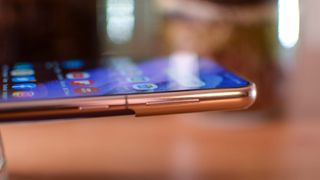
The flat edges on the Samsung Galaxy S21 lead to the metal edges flowing to the new “Contour Cut” camera design, where the rear camera module seems to blend into the S21’s left-hand edge, as well as the back.
Speaking of which, the metal gives way to what’s arguably the Samsung Galaxy S21’s biggest change: a plastic back. Samsung calls it polycarbonate but it's basically fancy plastic, whereas the S20 makes use of glass.
Opting for a plastic back is likely the biggest reason Samsung can offer the Galaxy S21 at its cheaper price. And while the lack of a glass back might seem odd for a flagship phone, I was pleasantly surprised to find that it didn’t feel cheap. Not only do I think it feels a little nicer than the polycarbonate on the S20 FE’s rear, it also has a more tactile finish than the glass-backed Galaxy S series, making it feel less likely to escape your grip or suck up fingerprints. Personally, I’m happy to pocket the savings if this helps keep costs down.
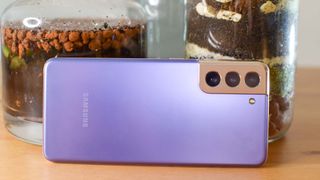
And the Phantom Violet S21 I had to review looks fantastic, even if the name sounds a little daft. The violet panel has a pleasantly soft hue, while the faint copper color of the camera bump and edges give the S21 a pseudo retro sci-fi look; think Star Trek meets Art Deco.
Three other color options — Phantom Gray, Phantom Pink, Phantom White — are available but I've yet to see them in the metal and plastic.
Measuring 6 x 2.8 x 0.31 inches and weighing 6.07 ounces, the Galaxy S21 is a bit smaller yet a little heavier than the Galaxy S20 (5.9 x 3 x 0.31, 5.7 ounces). But I think it is the ideal size and weight for one-hand use; small enough for my thumb to reach two-thirds of the display, but large enough to sit down and watch hours of videos on.
The Galaxy S21’s in-display ultrasonic fingerprint reader is also more responsive thanks to using Qualcomm’s new scanner, which is 1.7x larger and 50% faster than the previous generation. I found the S21 rarely rejected a hasty tap from my thumb, which does wonders for my quick-temper.
What’s not ideal is the Galaxy S21 dropped the microSD card slot its predecessors have sported for a while. I’m not sure why Samsung did this, as there’s no obvious limitations of space inside the Galaxy S21, nor would I expect its removal to change manufacturing costs by much. Perhaps it's one way for Samsung to encourage people to buy the 265GB version, though with so many free cloud storage services, I’m ultimately not too fussed about the lack of expandable storage.
Samsung Galaxy S21 review: Display
Samsung has both downgraded and upgraded the Galaxy S21’s 6.2-inch AMOLED display from what the S20 previously featured. You no longer have to choose between a full HD+ resolution running at 120Hz or a QHD running at 60Hz, like you did with the Galaxy S20, but that’s because the S21 tops out at 1080p resolution.
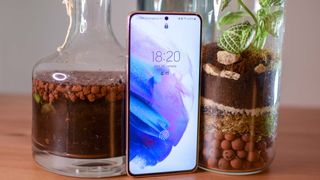
While that’s more restrictive, I feel it removes complexity. You can go and set the display to stick to 60Hz, if you want to eek out as much battery life as possible, or you just love a bit of judder when scrolling through web pages. But then you’d be given up a dynamic refresh rate, which allows the S21 to drop its refresh rate from 120Hz to 48Hz depending on the task at hand. It’s not an upgrade you’ll necessarily notice when you’re not scrolling, but it's a smart one that quietly makes the S21 more enjoyable to use.
Testing its “natural” screen setting, the Galaxy S21 display delivers 109.2% sRGB and 77.4% DCI-P3 color gamut coverage, and a Delta-E of 0.29. Those are good scores, though the iPhone 12 and the Samsung Galaxy Note 20 Ultra beat the S21 in terms of coverage and color accuracy.
However, in practical use the Galaxy S21’s display is fantastic. Stick it in “Vivid” mode and you’ll see heaps of contrast and color, even if the latter errs on the side of oversaturation. The display is great for watching videos and movies, ogling Instagram pics, and playing games on. Samsung has long had excellent displays on its Galaxy S phones, and the S21 is no exception.
Samsung Galaxy S21 review: Cameras
Hardware-wise, the Galaxy S21 cameras are exactly the same as the Galaxy S20. The triple camera array comprises a main 12MP wide-angle lens, a 12MP ultra-wide lens and a 64MP telephoto lens with 3x hybrid optic zoom and 30x space zoom.
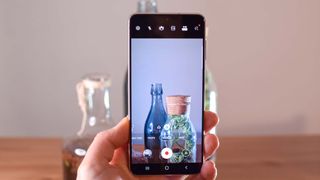
But Samsung is pulling a Google and leaning hard on software and computational photography upgrades to improve the trio of rear cameras. And for the most part, the Galaxy S21 achieves this. But now that the Galaxy S22 is the new kid on the block, Samsung has announced that it's bringing some of that phone's camera features to the Galaxy S21, like nighttime portraits with the telephoto lens.
Let’s start with the standard photo mode. Take a look at the photo below; with multiple colors and shades to deal with, plus the light coming in from the left, it presents a smartphone camera workout.
The Galaxy S21’s photo is flush with color and detail, though like Galaxy phones in the past, the colors are perhaps a little more saturated than those of the Google Pixel 5 I used for comparison. The Pixel 5 delivers a warmer tone and more true-to-life colors, with better dynamic range.
However zooming in, the S21 picks out some finer details, likely due to its telephoto camera, with the grill on the model Aston Martin DB5 and the numbers on the Vox headphone amp clearer than in the Pixel 5’s photo.
It’s worth noting I switched off the Scene Optimizer feature, which uses AI to identify what’s in-frame and adjust the camera accordingly to get the best shot. In practice, I feel this can result in some over-processing.
Outdoors in natural light and the S21‘s main camera does a fine job. While it was hardly an ideal photography situation, in the shot below, the Galaxy S21 picks out more detail than the Pixel 5 in the tower buildings on the right and London's Canary Wharf in the background. However, the Pixel 5 offers more dynamic range and colors that are truer to life.
Speaking of which, things get a little complicated in lower-light situations or environments lit by artificial light. I found the Pixel 5 was better at edge detection and resolving detail in low light areas, whereas the S21 occasionally throws up smudged and over-smoothed results.
You really have to go looking for this though, and I believe it's down to the Galaxy S21 ramping up the ISO and introducing more noise into darker sections of a shot as a consequence. I suspect this could be some teething problems with the AI processing being applied to low-light areas, something which Samsung could fix with a software update.
Poor light doesn't help the portrait mode either. Thanks to social distancing rules in the U.K. I had to snap a pic of my friend Claire on her doorstep as the sun went down; this meant there was the challenge of dealing with low light on one side and a porch light on the other.
The Pixel 5 copes admirably, delivering more natural skin tones and picking out details in the highlights and the shadows. But S21 struggles a bit, washing out and over-smoothing Claire’s face. And it fails to pick out much detail in her hair especially on the left-hand side.
Non-portrait S21 photos fare better, so I suspect the portrait mode’s algorithm is struggling to pick out what’s in the foreground and what should be blurred out; something the Pixel 5 is particularly good at.
In better light conditions, the portrait mode is much better for both the rear and 10MP front-facing camera; take a look at the photo below of Tom’s Guide's Mark Spoonauer as an example.
And shooting objects rather than faces sees the Galaxy S21 deliver a nice portrait photo.
The Galaxy S21 doesn't deliver the sharpest of portrait mode cutouts like the Pixel 5, as Samsung opts for a more gradual blur effect. I prefer the clarity of Google’s handset but the S21 still gets some nice results.
Switch over to the S21 night mode, and the low-light problems are swept away. In the shot below, the S21 delivers a bright image that's more detailed (notably in street lights) than the Pixel 5. With more cameras to use for capturing light and detail, the S21 shows up the limitations of the Pixel 5’s dual rear cameras.
I prefer the colors the Pixel 5 offers, though. And the S21 seems to apply a good amount of sharpening to its night shots. Night mode can also be used across all three of the Galaxy S21’s cameras.
Ultra-wide angle shots are expensive on the Galaxy S21, but once you zoom in things come apart. While it captures a wider view than the Pixel 5, punching into a shot reveals hazy details, whereas Google’s phone is much clearer. You’ll have to weigh up whether a lack of fine detail is worth a more expensive photo.
It’s with the telephoto camera’s 20x and 30x “Space Zoom” where the S21’s real camera upgrades come into play. Notably, the new Zoom Lock feature, which uses AI to identify the subject and steady the shot.
This works rather well and you can get shots that are surprisingly clear for such extreme zooms, even if you have rather shaky hands. Then the processing afterward cleans up the photo and results in a zoomed shot that’s not a muddy mess.
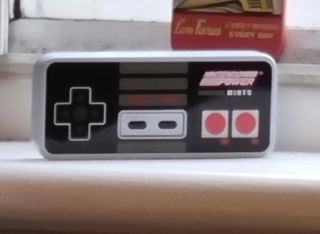
Using Space Zoom I could get a reasonably clear pic of a small mint tin on my window still from the other side of the room. I’m not sure how practical it is for every-day smartphone photography, but it’s an impressive showcase for AI tech.
On the video front, the Galaxy S21 covers a lot of bases. Like the Galaxy S20 it offers up to 8K capture at 24 fps, which its overkill for most, but it lets you snap high-quality photos while recording very high resolution videos. Other high-end features include 1080p video recording at 120 fps, which makes them super-smooth. Speaking of smooth, the Super Steady mode, which uses AI to compensate for shaky recording, will works on 1080p 60 fps video capture.
Another highlight is the new Director's View when you're shooting video. You can shoot using the front and rear cameras at the same time, as well as view live thumbnails from the multiple cameras. This makes it easier to switch to the best shot for your video. It works rather well and is less of a gimmick than I first thought.
The portrait video, which is basically a renaming of live focus video, is also rather slick, delivering footage where the subjects are in focus while the background is blurred. If you move around a lot you can see the S21 working its algorithms, which results in sometimes over smoothing details on faces.
Other camera upgrades include an improved Single Take feature that takes a bunch of stills and photos with a single tap. Single Take now delivers Highlight Video and Dynamic Slow-Mo clips.
All the above taken into account, the Galaxy S21 delivers an upgrade over the Galaxy S20. I don’t think it has what it takes to knock the iPhone 12 Pro Max off our best phone cameras list and the iPhone 12 could still have it beat, But the S21 trades blows with the Pixel 5, and beats Google's phone in a lot of areas. Potential for further refinement on the AI and computational photography side by Samsung leaves plenty of scope for the S21s camera to get better over time.
Samsung Galaxy S21 review: Performance
In the U.S, the Galaxy S21 comes with the latest Snapdragon 888 chip, which promises 20% better CPU performance, 35% more GPU speed, as well as boosted AI performance. Even though there's no 12GB of RAM option, the S21 does plenty with its 8GB, and I didn't encounter any slowdown in my testing.
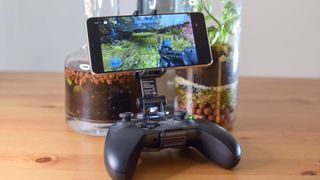
Speaking of which, putting the Snapdragon 888-equipped S21 through a series of benchmarks, saw the chip deliver a multi-core score of 3,302 in Geekbench 5. That’s slower than the iPhone 12, which raked in a score of 3,859. But the S21, unsurprisingly, outpaces a lot of other Android phones with the older Snapdragon 865.
As for the graphics performance, the S21 topped out at 33 frames per second in 3DMark’s Wild Life graphics benchmark. It’s beaten by the iPhone 12’s 39 fps, but is ahead of other flagship Android phones. In practical use, though, the S21 chews through games.
Both Call of Duty: Mobile and Asphalt 9 Legends ran smoothly at max settings, with the 120Hz refresh rate further adding to the smoothness. It’s worth noting that while we tested the Snapdragon 888 Galaxy S21, I was using a handset with the Exynos 2100.
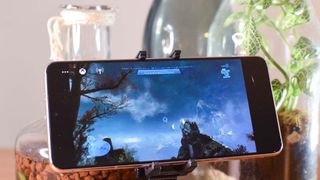
Built on a 5-nanometre process node like the Snapdragon 888, the Exynos 2100 is meant to deliver 20% improvement in energy efficiency and a 10% improvement in performance over the last-gen 7nm Exynos 990. Throwing the S2100 at Geekbench 5, it got a score of 3,391 so is on par with the Snapdragon chip, which is gratifying as Exynos chips have previously lagged behind.
With those games open and a load of other apps running at the same time, I didn’t notice any slowdown or lack of responsiveness from the S21, though its back got a little warm.
Samsung Galaxy S21 review: Battery life and charging
Like its predecessor, the Galaxy S21 comes with a 4,000 mAh battery. That’s fine for a phone of its size, though it's a pity Samsung didn't up the capacity a little. Still the adaptive refresh rate and improved chip efficiency should deliver better battery life.
Set at the 60hz refresh rate, the Galaxy S21 managed 9 hours and 53 minutes in Tom's Guide battery test, which involves continuous web surfing at 150 nits of screen brightness over 5G.
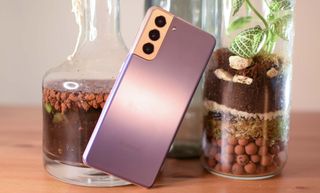
That’s not long enough to make our best phone battery life list, but it beats the 8 hours and 25 minutes of the iPhone 12. And it just about outlasts the Galaxy S20 with its 9 hours and 31 minutes, so the new silicon seems to be playing its part.
Left in its default "Adaptive" mode, which dynamically adjusts the display's refresh rate, the Galaxy S21 lasted 6 hours and 31 minutes. That's not amazing, but it's far from bad when you get a vibrant display with a 120Hz refresh rate.
Furthermore, the AI smarts in the S21 should learn about my phone use over time and better optimize battery consumption, but that’s not going to be something that happens over night.
Charging is where things get a little messy. Fast charging is on offer over the USB-C PD standard, juicing up the battery to 55% in 30 minutes in our testing. The problem is, you need to make sure you have a charging brick to hand, as Samsung only puts the USB-C cable in the box. If you don’t have a charger then Samsung will sell you a 25W charger.
Samsung made a big song and dance about this decision being environmentally friendly; of course, it saves Samsung money too. Ultimately, I feel this is the right move, whatever the motivation. Helping cut down on electronic waste is worth the extra expense and minor inconvenience it might cause some S21 buyers who aren’t flush with phone chargers.
Samsung Galaxy S21 review: Software and One UI
While I’ve used Samsung phones for years, I’m not the biggest fan of the user interface it drops on Android. But with the introduction of One UI in 2018, I’ve been slowly warming to Galaxy series take on Google’s mobile operating system. The version of One UI 3 that debuted with the Galaxy S21 built upon this goodwill.
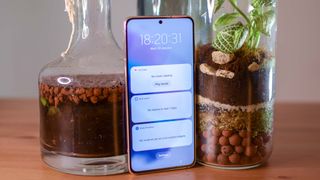
The interface is more elegant, complete with a redesigned Quick Panel and a notifications screen that feels less cluttered. I especially appreciate the redesigned lock screen widgets as well as the ability to place widgets on the screen and adjust their transparency.
While One UI offers a lot of options to tweak your Galaxy experience, it can get a bit overwhelming at times when you just want to find one particular setting. And my word, do I dislike the main apps drawer of the One UI. Despite its third iteration, the apps are arranged in a seemingly random manner which if you’re moving from one app-heavy phone to another can make finding the apps you want to set up your homescreen a minor nightmare. Compared to the elegance of the app drawer in stock Android, Samsung’s is a mess.
I understand Samsung would like me to use its services, but so many other Android phones default to Google features, such as auto-fill for passwords. But One UI 3 tries to force me to use Samsung Pass and my Samsung account, which ironically I often forget the password for. It’s fine once you get setup, but it can be frustrating to use until you adapt to it. There’s still definitely room for Samsung to improve here.
Samsung's flagships support Samsung DeX. This feature lets you take the Galaxy S21 and connect it to an external monitor to turn the phone into a pseudo Chrome OS experience. You also get four years of platform updates and five years of security patches from Samsung, which is the best update policy you can get on an Android phone (yes, even beating Google's Pixels).
Samsung Galaxy S21 review: Android 12
Samsung released One UI 4 for the Galaxy S21 in mid-November 2021. This update brings Android 12, which offers several key improvements to the UI and privacy elements. You can now choose your system accent color with the Color Palette, or access the privacy dashboard to see which apps are using your mic, camera, and location.
To that end, One UI 4.1 rolled out to the Galaxy S21, among other phones. And it brought many of the software features introduced with the Galaxy S22. With One UI 4.1, your Galaxy S21 now supports a host of camera capabilities including Night portrait, pet recognition, telephoto portrait view and more.
While Samsung has modified something from what you'll find on a Pixel phone, you can read our Android 12 review to learn more about what you can expect with the update.
Samsung Galaxy S21 review: Verdict
With Samsung removing as much from this phone as it adds, I was prepared to be let down by the Galaxy S21. But I needn’t have worried.
Sure, a plastic back isn’t ideal on a flagship phone but I soon got used to the polycarbonate, and the overall design of the Galaxy S21 is lovely, as well as more practical than the S20. The lack of any hardware upgrades for the cameras was a little disappointing, but then they still produce flagship-grade results and have a huge amount of features and tools to really dig into.
I would have liked to have seen Samsung push the hardware envelope for the Galaxy S21, but that’s the domain of the Galaxy S21 Ultra. By making what I feel was the right choice when it came to removing features, the Galaxy S21 still offers the latest flagship chips, a fantastic display and powerful cameras in a refined smartphone at a competitive price; one that should worry the iPhone 12.
The only fly in the ointment, is the Galaxy S20. If you already have an S20 then I don’t think you’ll benefit from an upgrade. I feel Samsung knows this and the S21 is more for people with older Galaxy phones or looking to move to their next phone. If you're in such a position, then I really suggest you consider the Galaxy S21 as you won’t be disappointed.
Roland Moore-Colyer a Managing Editor at Tom’s Guide with a focus on news, features and opinion articles. He often writes about gaming, phones, laptops and other bits of hardware; he’s also got an interest in cars. When not at his desk Roland can be found wandering around London, often with a look of curiosity on his face.
-
Rob Gladstone I pre-ordered today. Got the workplace discount of $40 plus another $100 credit for accessories. Git the 25W charger, armor phone case, and UV germ killing/ charger box. So all that for $759 plus tax.Reply -
nirok85 why is everyone saying that a lack of charger in the box is a bad thing? Its an incredibly good thing an should be under the positive section. who doesn't already have 3 chargers? e waste is a huge issue and it should be seen as we are moving in the right direction which is a very positive thing.Reply -
Rambocrowe I traded my S-20 in for the S 21 and I like it very much. I was happy that this time my trade in phone qualified fully for the $700 deduction which did not happened when I traded in my S-8 for the S-20. The battery lasts long enough for me. To me anyway, the keys on the on screen keyboard seem to be bigger which is good with my big fingers. I'm thinking that my wife may like one of those Z flip phones better since she likes flip phones anyway.Reply -
facest Reply
This is the first Android phone I've bought since the Galaxy S2 and I didn't realise it only came with a USB-c to USB-c cable - they don't hide it or anything, I just didn't even think to check. If you want to make it a positive thing then at least include a cable that works with the chargers that everyone has, not just the latest. I get that by providing a c-to-c cable they're near guaranteeing that the charger you use is high enough watt to support it, but I'm still buying an additional charger just to be able to use this.nirok85 said:why is everyone saying that a lack of charger in the box is a bad thing? Its an incredibly good thing an should be under the positive section. who doesn't already have 3 chargers? e waste is a huge issue and it should be seen as we are moving in the right direction which is a very positive thing.
At some point I'm going to have to either buy more a-to-c cables or new chargers and c-to-c cables, and I don't think I've thrown a single charger out since USB chargers became a thing.
E-waste is for sure a problem, but do that many people actually throw them away? Everyone I know has a dozen plugged in or in drawers, and it's really convenient to have a few spares around for if you're traveling or working in the garage or whatever. To each their own I guess? -
Solandri Reply
If you've bought a new laptop which charges via the USB-C port, then no you don't need to buy an additional charger to use this. The laptop's charger will work with the phone. Both use USB-C PD (power delivery). It's an important enough development that I've been steering all my friends, clients, and relatives towards laptops which charge via USB-C PD.facest said:I get that by providing a c-to-c cable they're near guaranteeing that the charger you use is high enough watt to support it, but I'm still buying an additional charger just to be able to use this.
At some point I'm going to have to either buy more a-to-c cables or new chargers and c-to-c cables, and I don't think I've thrown a single charger out since USB chargers became a thing.
USB-C PD dynamically increases the voltage if the device requests it. Without getting into a lot of electrical engineering, a higher voltage allows you to deliver more power a longer distance via thinner wires. So increasing the voltage was necessary to achieve USB charging rates higher than about 15 W.
USB-A is forever stuck at 5 Volts, so you can't do this with USB-A to USB-C cables. It has to be USB-C to USB-C.
E-waste is for sure a problem, but do that many people actually throw them away? Everyone I know has a dozen plugged in or in drawers, and it's really convenient to have a few spares around for if you're traveling or working in the garage or whatever. To each their own I guess?
It's not really about reducing e-waste, more about simplifying life. Including a charger with every phone made sense when the chargers were limited to 5-15 W and cost like 50 cents to produce.
Due to the complexity and higher wattage of USB-C PD, a capable charger will run you $20-$50. You don't want to pay for a half dozen of these (cost included in the product price) which sit in your drawer and are never used because every device you bought included one "for free". You want to invest in just a few - one for the living room, one for the bedroom, one which you take with you when you travel. That one charger will charge all your devices - phone, laptop, tablet, other devices powered by USB-C PD which haven't been invented yet. (And if you're wondering what if two devices both need to be charged, they make chargers with multiple USB-C PD ports.)
It's a step in the right direction - the start of being able to use one charger to charge anything. That's why you can use your laptop charger to charge your phone. You can use the USB-C PD charger on the newer Macbooks to charge the newer Windows laptop, and vice versa. (You just have to make sure the charger has sufficient max wattage. 65W seems to be becoming the standard, although there are versions which go up to 100W, and a few lower-end laptops use 45W chargers.) I foresee USB-C PD becoming the de facto standard for supplying DC power in cars, boats, houses, etc.. Finally eclipsing the ubiquitous raw 12V DC power (cigarette lighter), which actually varies from about 10.8V to 14.5V and can wreak havoc with sensitive electronics. I'm glad to see Samsung ditched their own proprietary fast-charging standard to support USB-C PD.
OTOH, Apple's decision to exclude the charger from the iPhones is less justifiable. Since the plug is proprietary, the only thing you can charge with them is an iPhone. So the only thing the customer gains by buying the charger is the ability to charge an iPhone, nothing else. What's really sad is that Apple could easily convert its Lightning data and power standards to run over USB-C cables, and have all their iOS devices use USB-C ports and cables.. The USB-C spec was made flexible enough that you can run other standards over the cable. That's how we get displayport and HDMI over USB-C, and Thunderbolt (PCIe over USB-C). -
Donna F. K-B Replynirok85 said:why is everyone saying that a lack of charger in the box is a bad thing? Its an incredibly good thing an should be under the positive section. who doesn't already have 3 chargers? e waste is a huge issue and it should be seen as we are moving in the right direction which is a very positive thing.
How can you know if a previous charger, used for a different phone, will work with this phone? -
unto I'm done buying android phones without unlockable bootloaders than are Open Access addable to my Verizon account.Reply
QC4+ is the fast charge protocol speaking PD3 QC3 DASH and a few others. That is what to search when buying a wall charger (or power bank).
When buying a cable you will want it eMarked for 60W or greater. No, your phone is not capable of 60W but eMark indicates a quality and capability. Play money roulette otherwise.
Test your wall charger protocol with a USB multimeter. Current prices for the desirable features start at $40. Bluetooth enabled computer reception is grand. You can see the power graphs under load and various noise characteristics. No more relying on fake amazon reviews. Those are entirely the fault of internal Community Team at amazon; the same horrible people who torment frequent reviewers. These people can be manipulated by companies to remove true negative reviews. It happens often -- which discourages people writing reviews. LifX, manufacturer of hardware-malware lightbulbs which also spy on user's home network, is notorious for removing negative reviews.
Amazon Fantany 30W speaks the desired protocols with enough juice for every phone I own; it is QC4+ with PPS (having PD3 and QC3 and DASH). I would NOT use it for online or offline charging of my MacBook Pro i9 16. For that I only use the mac wall charger plugged into online sine UPS (tripplite). Fantany has a great micro 18W travel charger. I also have good results with current Aukey chargers. I actively dislike Anker PowerIQ 3.0 chargers as they are missing 12volt and 15volt PD3 profiles. Hypper 100W 2 port QC4 charger is great (but again not for my mbp). In a pinch some Ravpower PD chargers don't fail often.
Like phones NOT all chargers are 'good enough' for a flagship phone or other costly device. Don't be a cheapskate.
